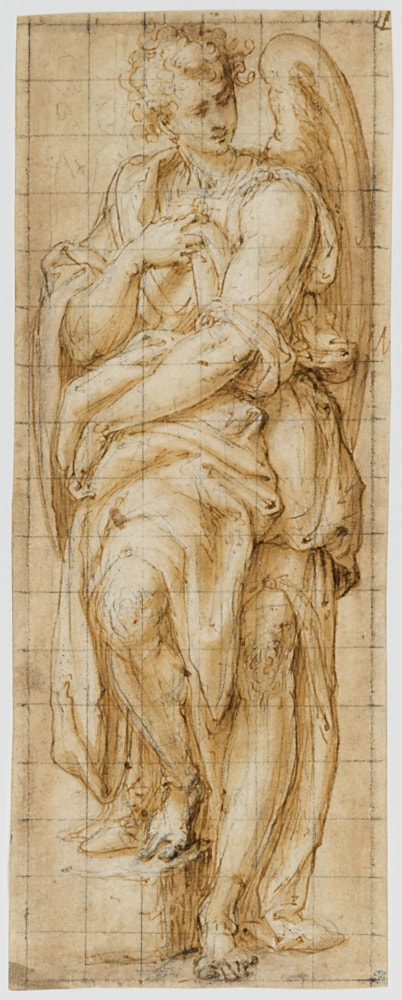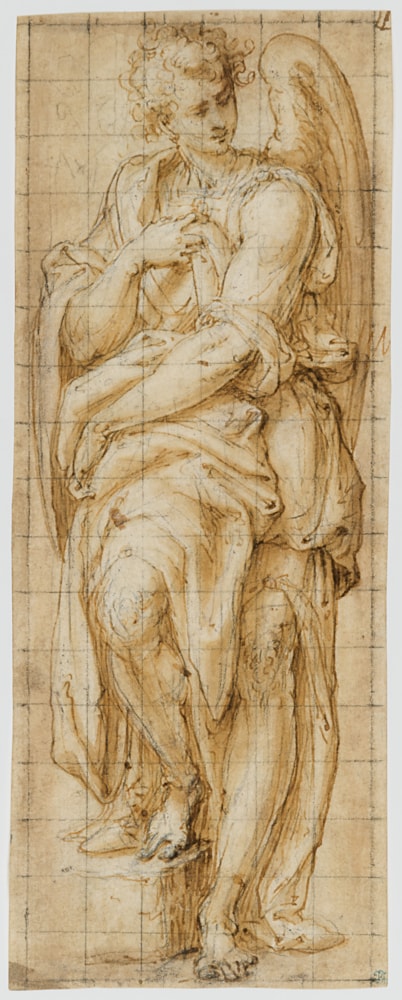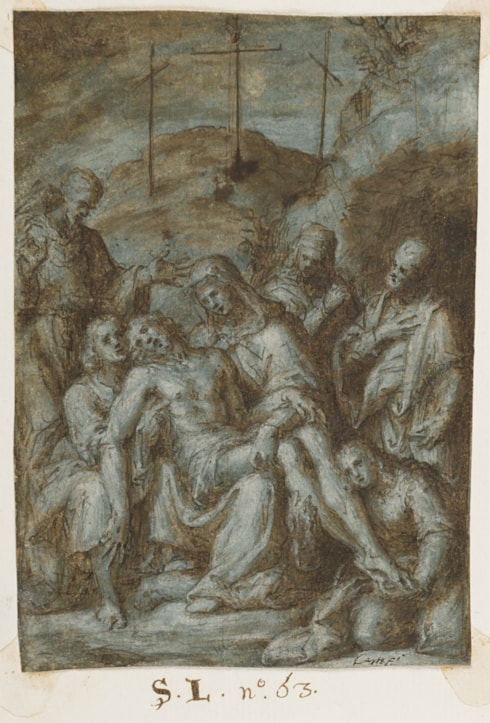
Aurelio LUINI
Milan c.1530 - Milan 1593
Biography
The youngest son of the Milanese painter Bernardino Luini, who died when he was an infant, Aurelio Luini nevertheless worked in his father’s tradition as a pupil and one of the most accomplished followers of Leonardo da Vinci. Like his father, Aurelio worked throughout his life in and around his native city of Milan, often in collaboration with other local artists. Together with his brother Giovan Pietro, he was tasked with completing some of the fresco decoration begun by their father Bernardino in the Milanese church of San Maurizio al Monastero Maggiore. In this cycle of scenes from the life of Christ, his first major independent work, Aurelio’s forms retain his father’s characteristic softness and chiaroscuro. Many of the younger Luini’s commissions came from religious societies, and his work can be found in several churches in Milan, including San Simpliciano and the Duomo. He also produced numerous fresco cycles in the city and throughout Lombardy and Piedmont, notably in the church of Santa Maria di Campagna in Pallanza, on Lake Maggiore, where he worked alongside the painter Carlo Urbino. Among Luini’s final and most significant works were the now-lost frescoes of scenes from the life of Saint Ambrose for the vault of a chapel in the Tribunale di Provvisione in Milan, completed a few weeks before his death in 1593. As well as being a painter, Luini also composed music and poetry, and was himself the subject of a sonnet written by artist and theorist Giovan Paolo Lomazzo, who regarded him as the most gifted of Bernardino’s Luini’s three sons: ‘Evangelista and [Giovan] Pietro [Luini] are equal in painting, but you are more worthy, Aurelio, whose mind has higher aspirations, as one can see and admire in your work. Besides, with the lyre singing sweetly you reveal your thoughts and your drawings in ornate and worthy verses.’
Aurelio Luini was a talented draughtsman, and the only one of the three Luini brothers to have a recognizable drawing style. One contemporary source, writing two years after Aurelio’s death, noted of him that ‘Il Louino fù gran disegnatore, & acurato pittore, e versato in molte altre honorate virtù, il che universalmete era amato da tutti, e nella pittura fù vero imitatore del padre.’ He tended to work in pen and ink, sometimes with wash on blue paper, with a confident and nervous manner. Drawings by Luini are fairly rare, and only some two hundred are known.



